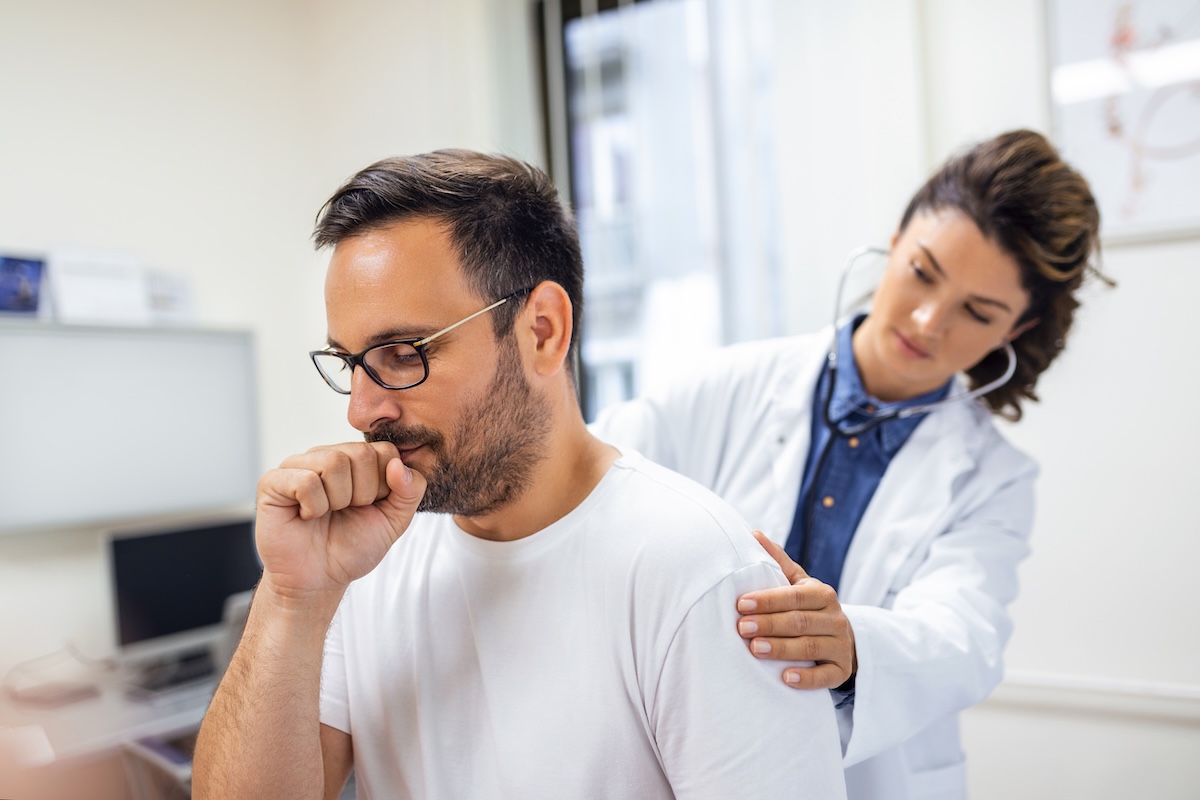Pneumonia is a lung infection that can make it hard to breathe and leave you feeling very tired and unwell. It happens when the air sacs in one or both lungs fill up with fluid or pus. These sacs, called alveoli, normally fill with air when you breathe. But when they become infected, they can’t work properly, which makes it harder for your body to get the oxygen it needs.

While pneumonia can affect anyone, it’s more dangerous for older adults, young children, and people with weakened immune systems. Some cases are mild and clear up with rest and medicine, but others can be more serious and require hospital care. That’s why it’s important to understand the signs, what causes it, and how to treat it effectively.
In this article, we’ll walk you through what pneumonia is, the different types, what symptoms to look for, and what treatments are available.
What Is Pneumonia?
Pneumonia is an infection in the lungs that causes inflammation in the air sacs. These air sacs may fill with fluid, making it difficult to breathe normally. This leads to symptoms like coughing, fever, and chest pain. You may also feel extremely tired and weak.
The infection can affect just one part of the lung or both lungs. It may start suddenly or develop slowly over several days. The severity of pneumonia can vary from mild to life-threatening, depending on your age, overall health, and the type of germ that caused it.
Pneumonia can happen on its own or as a complication of other illnesses, like the flu or COVID-19. It can also develop during or after a hospital stay, especially in people who are already very sick.
Causes and Types of Pneumonia
There are several causes of pneumonia, and they usually fall into three main categories: bacteria, viruses, and fungi. The exact cause helps doctors determine how to treat the infection.
Bacterial pneumonia is often more severe and is commonly caused by Streptococcus pneumoniae. It can develop on its own or after a cold or the flu. This type can affect people of all ages but is especially dangerous for older adults and people with chronic illnesses.
Viral pneumonia is usually caused by respiratory viruses like the flu virus, respiratory syncytial virus (RSV), or, more recently, the coronavirus (COVID-19). This form is often milder than bacterial pneumonia but can still become serious, especially in vulnerable individuals.
Fungal pneumonia is less common and usually affects people with weakened immune systems. The fungi that cause it may be found in soil or bird droppings and enter the body through inhalation.
Another way to categorize pneumonia is by how and where a person gets it:
-
Community-acquired pneumonia happens outside of a hospital setting and is the most common type.
-
Hospital-acquired pneumonia occurs during a hospital stay and can be more difficult to treat because the bacteria involved may be more resistant to antibiotics.
-
Aspiration pneumonia develops when someone inhales food, liquid, or vomit into their lungs, often due to swallowing problems or while unconscious.
Symptoms to Watch For
The symptoms of pneumonia can vary depending on your age, the cause of the infection, and your overall health. However, some of the most common signs include:
-
A cough that may produce mucus (green, yellow, or even blood-tinged)
-
Fever, which can be mild or high
-
Chills and sweating
-
Shortness of breath or rapid breathing
-
Chest pain, especially when coughing or breathing deeply
-
Fatigue and weakness
-
Loss of appetite
-
Confusion, especially in older adults
-
Blue lips or fingernails in severe cases (a sign of low oxygen levels)
Symptoms can come on quickly or slowly. In older adults or people with other health conditions, pneumonia may look more like general confusion, tiredness, or a worsening of existing breathing problems.
If you or someone you care for has a hard time breathing, high fever, chest pain, or symptoms that aren’t improving, it’s important to seek medical help right away.
Diagnosis and Treatment Options
To diagnose pneumonia, a doctor will start by asking about your symptoms and medical history. They will usually listen to your lungs with a stethoscope to check for crackling or wheezing sounds.
Depending on your symptoms, your doctor may also order a few tests, including:
-
A chest X-ray to see if there is fluid or infection in the lungs
-
Blood tests to check for signs of infection
-
A sputum test to find out what kind of germ is causing the illness
-
Pulse oximetry to measure how much oxygen is in your blood
Once pneumonia is diagnosed, treatment will depend on what type you have and how sick you are. For bacterial pneumonia, antibiotics are usually very effective. Most people feel better within a few days, though the cough may last for a few weeks.
Viral pneumonia doesn’t respond to antibiotics. In most cases, rest, fluids, and over-the-counter medications for fever or pain are all that’s needed. In some situations, antiviral medication may be used if started early.
Severe cases of pneumonia, especially in people with chronic illnesses or those who are very young or old, may require treatment in the hospital. This could include intravenous antibiotics, fluids, oxygen therapy, and other supportive care.
It’s also very important to rest, drink plenty of fluids, and avoid smoking while recovering. Most people start to feel better within a week or two, but full recovery can take longer depending on the severity.
